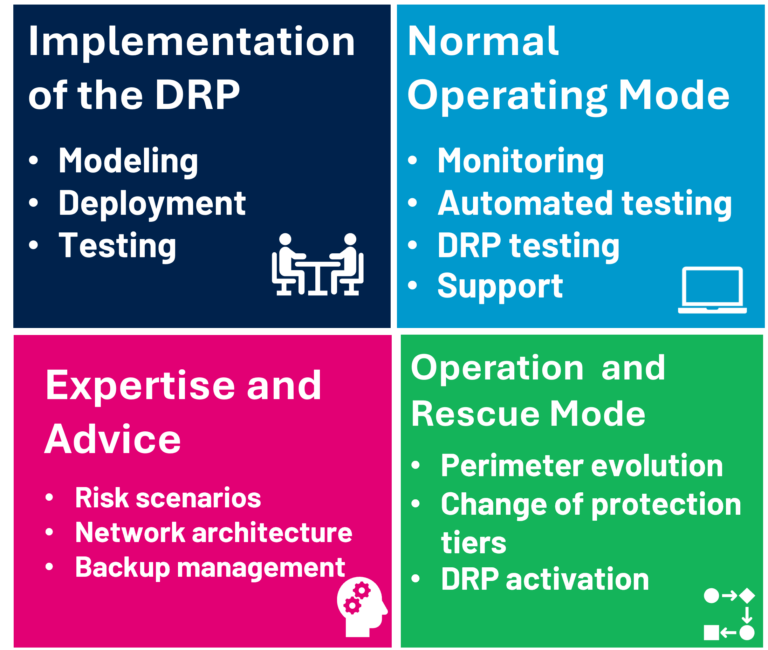
How the Nuabee's Cloud Disaster Recovery Plan works
An alternative to the traditional Disaster Recovery Plan, the managed Cloud DRP, also known as Disaster Recovery as a Service, is gaining momentum. It is appealing due to its quick implementation, practicality, and reduced associated costs.
This makes the Cloud DRP an ideal solution for Intermediate Size Enterprises, Small and Medium Enterprises, and organizations. It enables businesses to prepare for IT risks, cyber risks, and to ensure a rapid restart of the IT infrastructure following a disruption.
The fact that it is managed by a company dedicated to this DRP activity, like Nuabee, allows for a high level of trust in its operation when needed.
Cloud DRP technologies are creating enthusiasm among IT Directors and Chief Information Security Officers.
“Gartner Group and Forrester Consulting studies show a strong enthusiasm among IT Directors for these Cloud DRP technologies. According to Forrester Consulting, 59% of companies either have a Cloud DRP implementation project underway or are interested in the topic.”




The Fundamental Principles of a Managed Cloud DRP
 Trust
The frequency of DRP tests is the only guarantee of proper functioning:
Trust
The frequency of DRP tests is the only guarantee of proper functioning:- We believe that every 6 months is a generally good frequency.
- In some IT environments that change very little, the frequency can be annual.
- On the other hand, in IT systems that are undergoing transformation or evolution, a quarterly test may be necessary.
 Reduce Your Costs
Not all servers in your infrastructure need the same restart delay, and it is very costly to align all applications to the shortest delays.
Reduce Your Costs
Not all servers in your infrastructure need the same restart delay, and it is very costly to align all applications to the shortest delays.- The restart delay needs of the applications (Recovery Time Objectives or RTOs)
- The maximum acceptable data loss (Recovery Point Objective or RPO) for the applications
 Simplified Deployment
- Our complete protection solution for your IT system benefits from very rapid deployment and implementation compared to traditional market solutions.
Simplified Deployment
- Our complete protection solution for your IT system benefits from very rapid deployment and implementation compared to traditional market solutions.- This speed is possible thanks to our expertise and the industrialization of the solution.
- Thus, the implementation of DRP or backup projects is simplified and fast.
To provide the best experiences, we use technologies such as cookies to store and/or access device information. Consenting to these technologies will allow us to process data such as browsing behavior or unique IDs on this site. Failure to consent or withdrawing consent may negatively impact certain features and functions.
